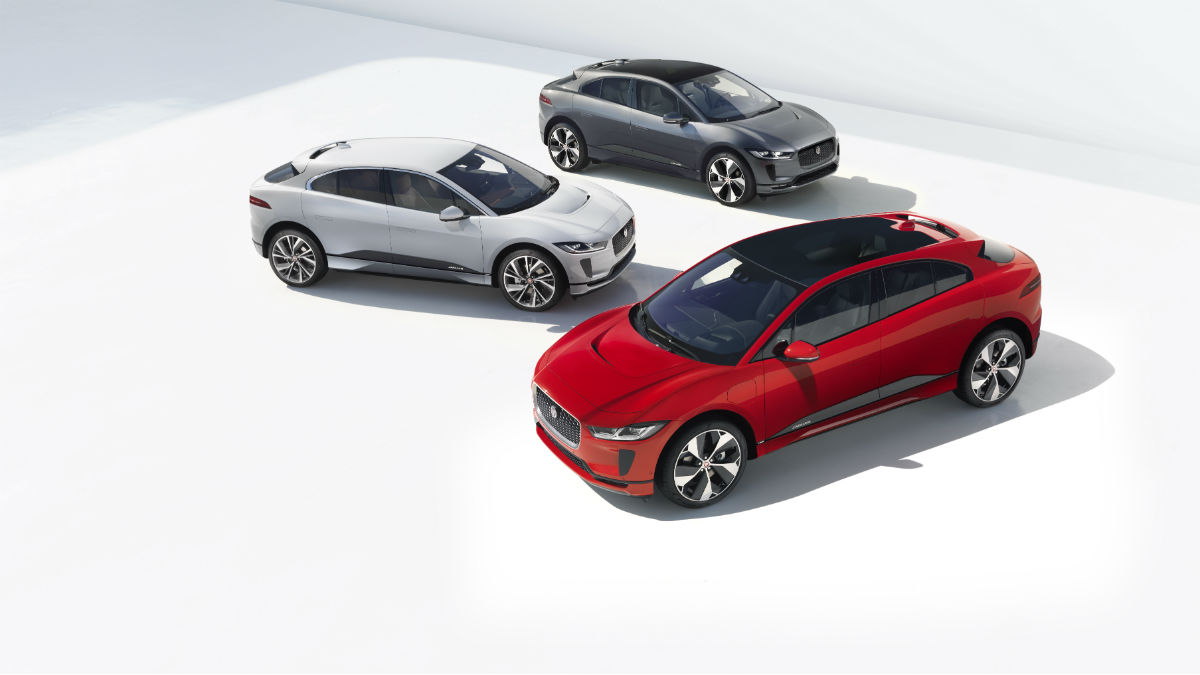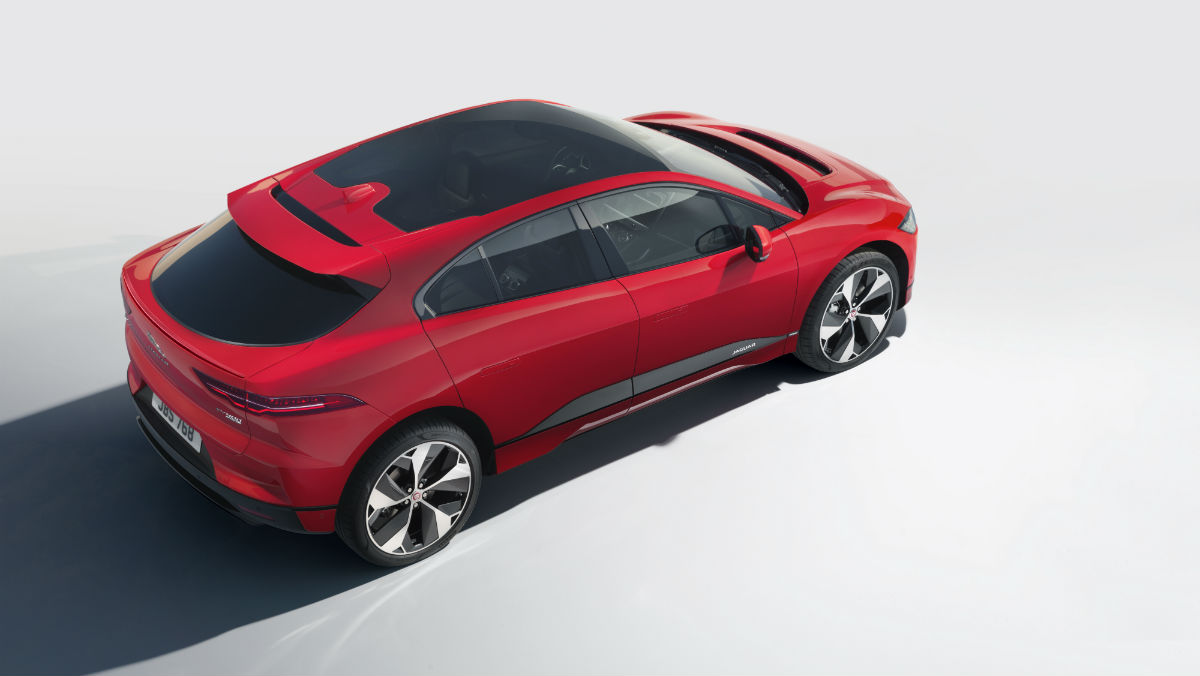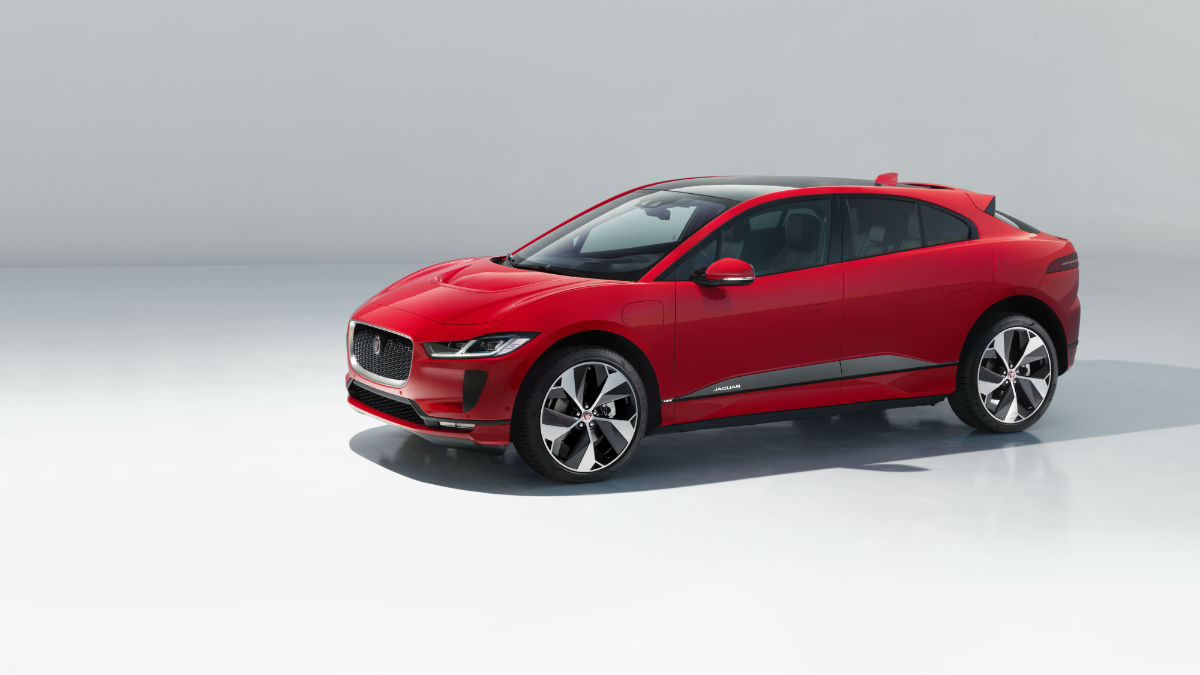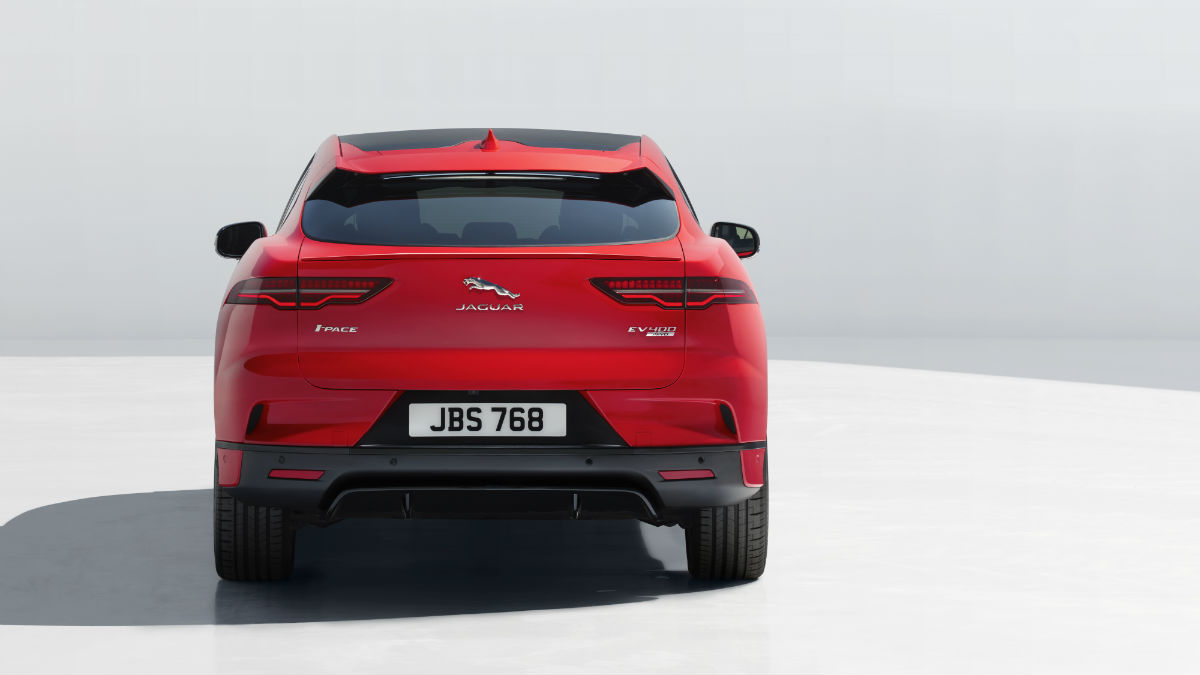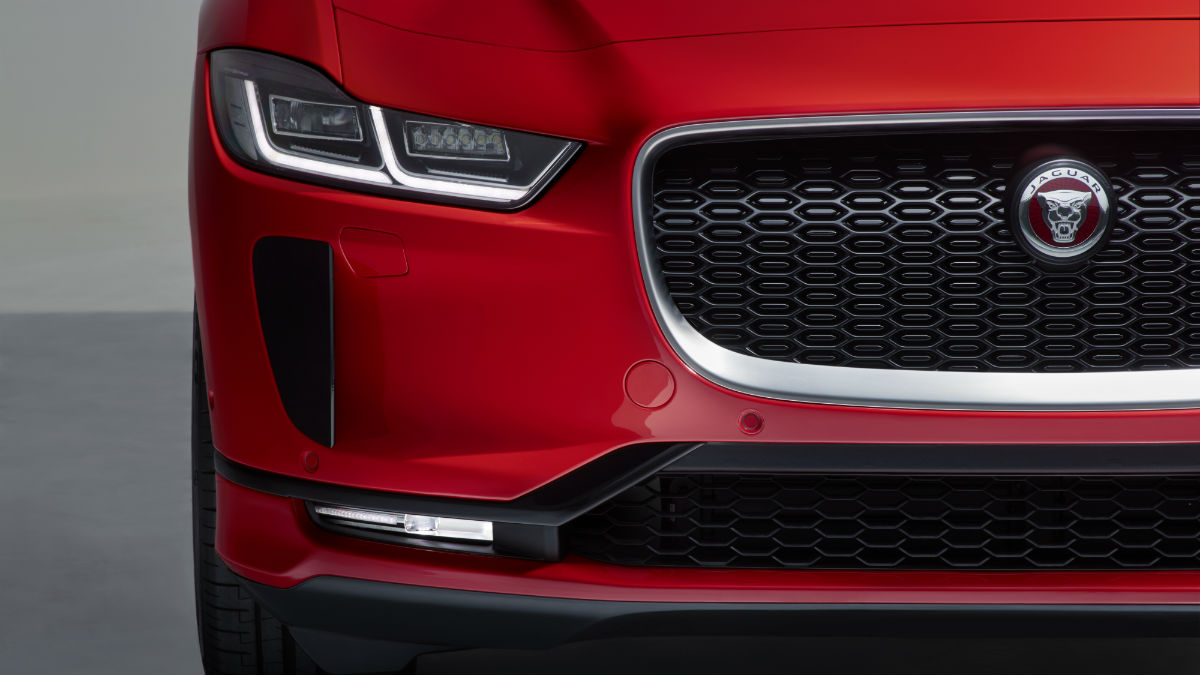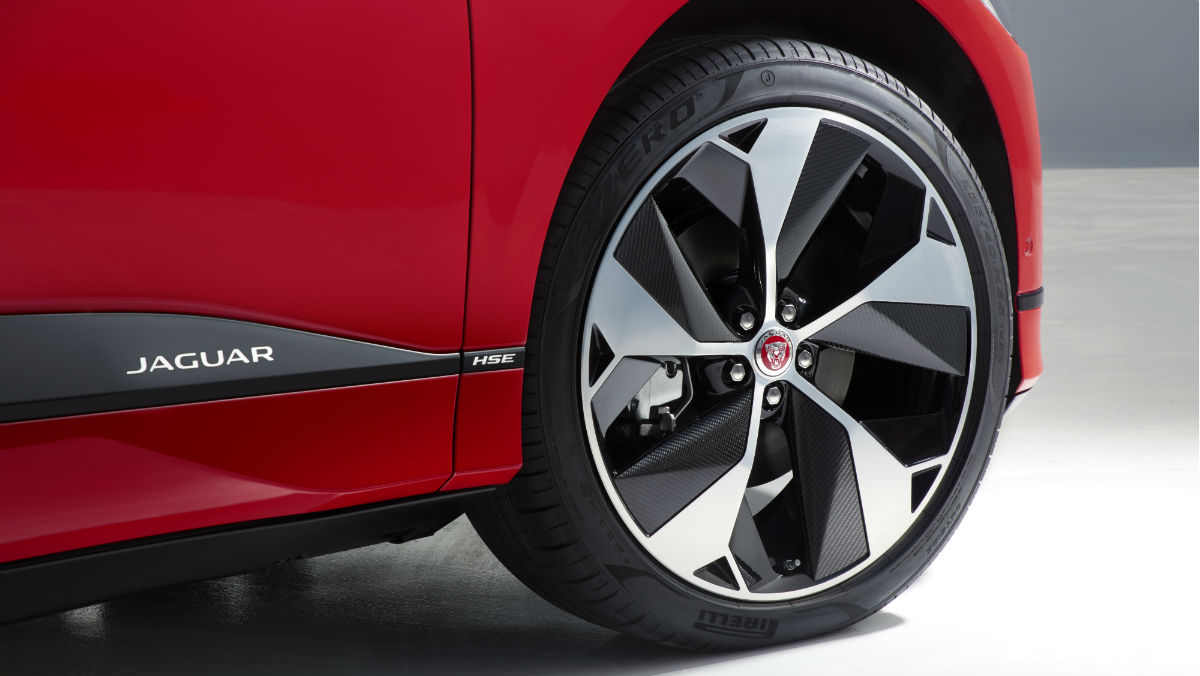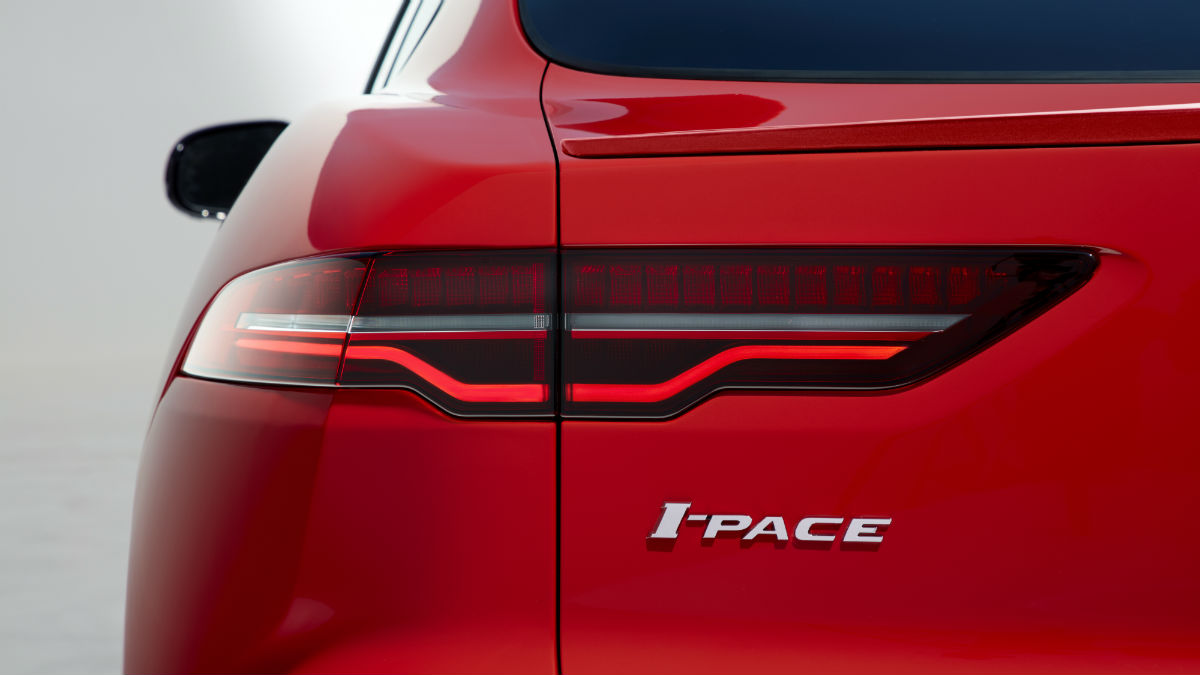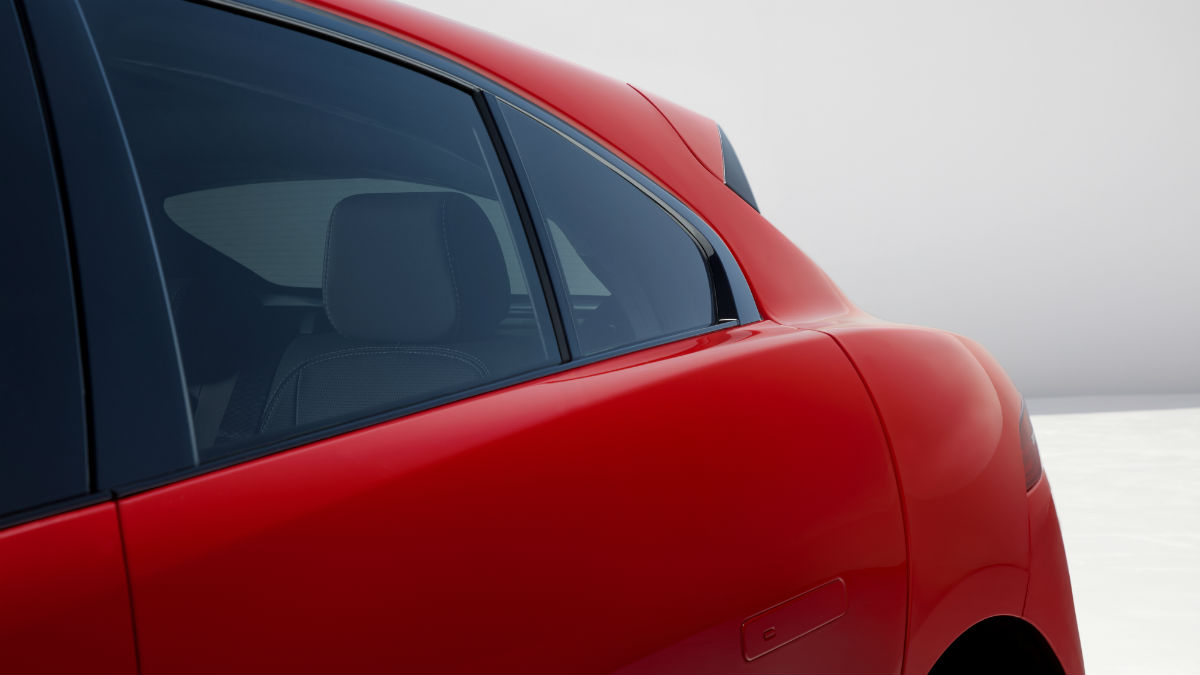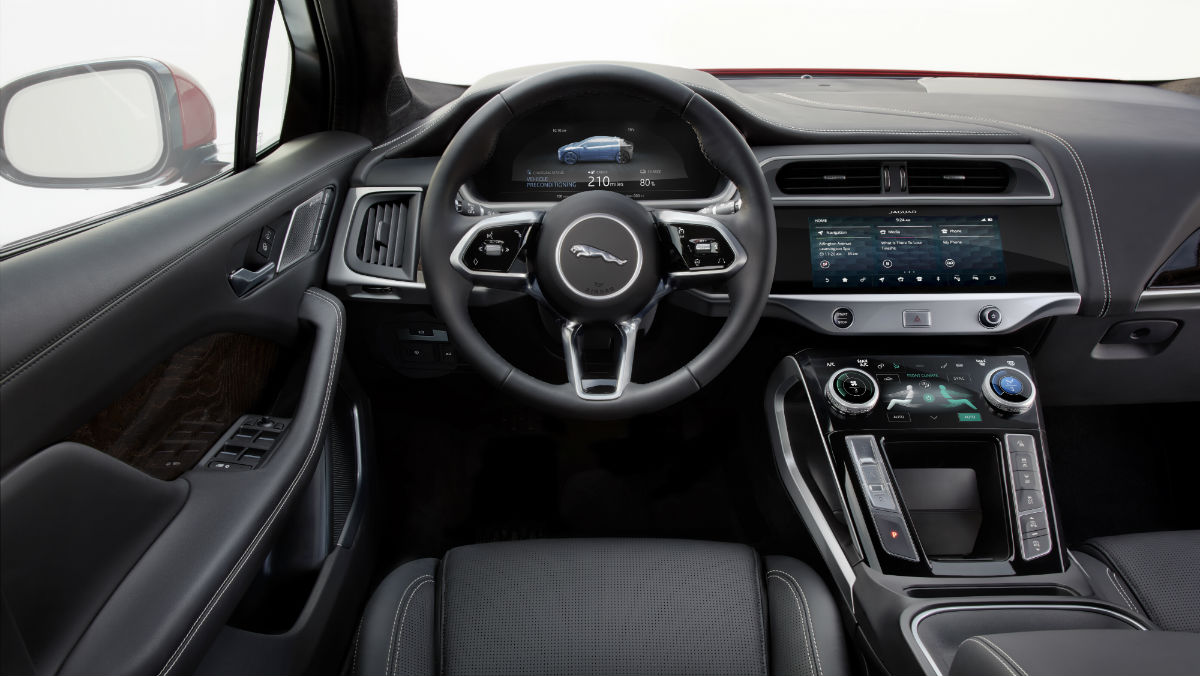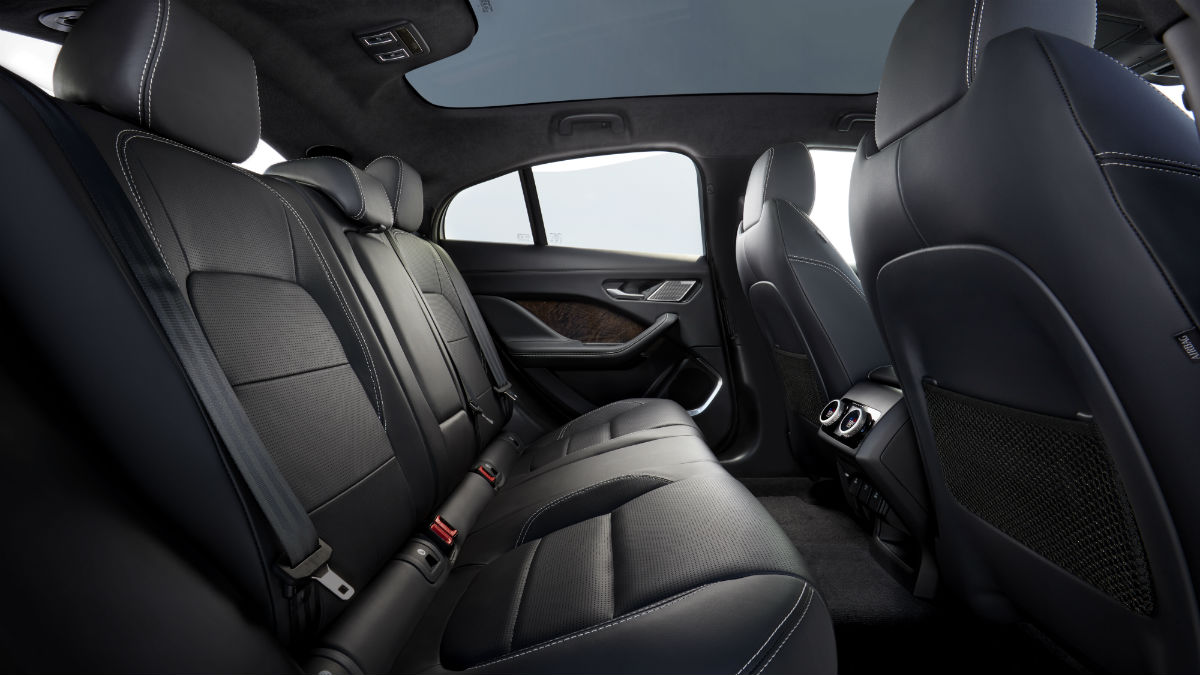This week, Jaguar proclaims, “Let there be charge!”
In a global webcast on Thursday, March 1, the UK automaker revealed its first all-electric model, the I-Pace.
British comedian and actor Jack Whitehall helped host a live introduction of the first production I-Pace at Jaguar’s manufacturing facility in Graz, Austria. The vehicle boasts a 432 pouch cell, 90kWh, lithium-ion battery pack that promises a range of 240 miles on a single charge. When the battery is tapped, owners can recharge up to 80 percent in just 40 minutes at DC fast charging stations. Home charging will take considerably longer: 10 hours for 80 percent charge.
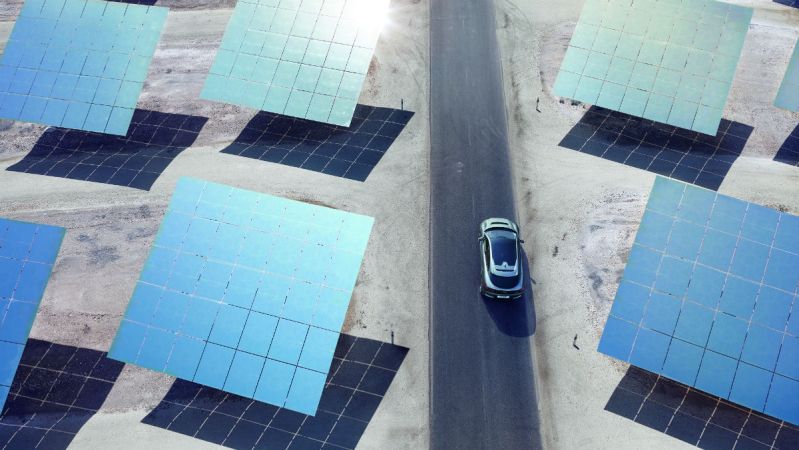
All-wheel drive performance is enabled via two Jaguar-designed concentric electric motors. Zero to 60 mph takes just 4.7 seconds, which is a faster sprint than most sport sedans. The electric “SUV” (in the same way the low-slung Mercedes-Benz GLA is considered one) uses an aluminum-intensive platform to reduce weight and improve torsional rigidity. Battery placement in the underfloor creates a low center of gravity and perfect 50:50 weight distribution.
Jaguar says the I-Pace design is inspired by the C-X75 supercar concept, and if you squint, you can see the resemblance. Short overhangs and a coupe-like silhouette flow into a squared-off rear end, for a drag coefficient of just 0.29Cd. The I-Pace uses “Active Vanes” in the grille to open for cooling or close for improved aerodynamics.
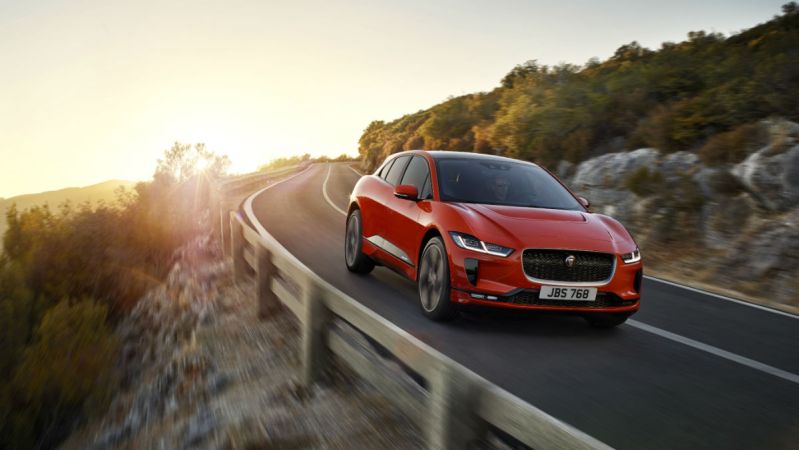
Inside, the lack of a transmission tunnel or front-mounted engine means a spacious cabin. Jaguar borrows Land Rover’s premium textile, Kvadrat, for the seating surfaces. In addition to the 25.3 cubic feet of trunk space (with rear seats in place), the I-Pace includes storage trays beneath the rear seats and a central compartment.
Jaguar’s InControl Touch Pro Duo infotainment system (shared with the Land Rover Range Rover Velar) utilizes a pair of center screens to cast navigation and media up top and climate control below. The I-Pace also shows personalized range and charging status based on road topography, route mapping, and driving behavior. Over-the-air updates will be available for the first time on any Jaguar vehicle.
Sales in the U.S. kick off in the second half of 2018. The I-Pace will be available in S, SE, HSE, and First Edition trim levels. Prices start at $69,500 – undercutting the Tesla Model X by $10,000.
